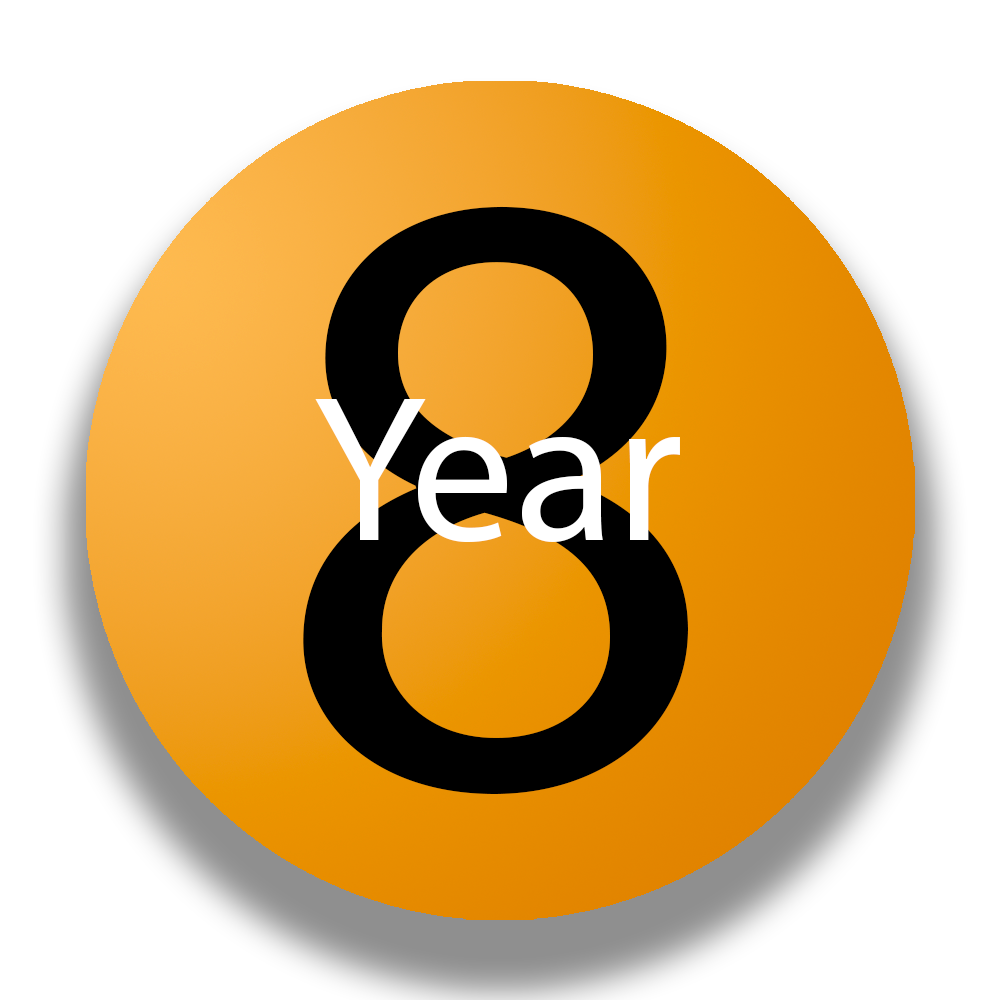A complete guide to British curriculum maths, for GCSE or IGCSE. All the professional lessons, worksheets and extensions are available and completely free. Below is a full list of topics and resources to revise Year 9 Maths at ease.
All Year 9 Videos can be found here.
Check out our revision page for tips on how to revise maths effectively.
1. Solving Harder Linear Equations
| Learning Objective | Revision Resource | Practice | Extension |
| Be able to solver linear equations, including with fractional coefficients. | Solving Equations Revision (from Year 7) Solving Harder Equations Video Solving Equations with x on Both Sides Video | Dr Austin Maths: Equations Practice Markscheme for above. Equations with Fractions Dr Austin Maths: Equations with Fractions Markscheme for Above. | Interwoven Maths Tasks 🆕🎉 Solving Equations with Parallel Lines Solving Equations with Fractions Solving Equations with Decimals |
2. Percentages
| Learning Objective | Revision Resource | Practice | Extension |
| Revision: Convert between Fractions, Decimals and Percentages. Find a Percentage of an Amount | Fractions, Decimals and Percentages Percentage of an Amount Video | FDP Worksheet Percentage of an Amount Practice | FDP Transum |
| Be able to calculate percentage change. | Percentage Changes Revision Video | Percentage Change Transum | |
| Understand reverse percentage problems, and be able to undo a percentage change. Eg: Sally bought a car in a sale of 20% off. She bought the reduced car for £4320. How much did the car cost before the sale? | Reverse Percentages Video | Reverse Percentages Corbett Maths | |
| Understand the difference between compound interest and simple interest. Be able to calculate return on compound interest. | Compound Interest Revision Video | Compound Interest Transum | Compound Interest Exam Questions |
3. Expanding and Factorising
| Learning Objective | Revision Resource | Practice | Extension |
| Year 8 Recap:Be able to expand brackets and simplify in algebraic expressions. Be able to Factorise Simple Expressions | Expanding Brackets Factorise Expressions Revision Video | Expanding Brackets Practice 1 Expanding Brackets Practice 2 Extra Practice on Expanding Brackets | |
| Be able to expand double brackets, and simplify after. | Expanding Brackets | Double Brackets Double Brackets 2 | Expanding Double Brackets Worksheet |
| Be able to factorise quadratic equations. | Factorising Quadratic Equations Video | Factorising Quadratics Transum | Quadratic Equations are very important for GCSE/IGCSE maths. It may be worth studying more of them now. This playlist will help. |
4. Frequency Tables
| Learning Objective | Revision Resource | Practice | Extension |
| Revision: Practice finding the mean from a frequency table (Year 8 topic). | Grouped Frequency Tables Video | Frequency Tables Transum | |
| Be able to estimate the mean from a grouped frequency table. Be able to find the modal class for a grouped frequency table/ | Grouped Frequency Tables Video | Grouped Frequency Tables Transum | Grouped Frequency Tables MathsGenie Grouped Frequency Tables Answers MathsGenie Extension: Solve problems where data is missing from the table, but the mean is given. This involves working backwards. For example: Question 8 here. |
5. Rearranging Formulas
| Learning Objective | Revision Resource | Practice | Extension |
| Be able to rearrange simple formulas. | Rearranging Harder Equations | Transum Changing the Subject | |
| Be able to rearrange harder formulas, including where the variable appears twice. | (As above) | Transum Changing the Subject 2 | Changing the Subject Textbook Changing the Subject Exam Questions Changing the Subject Exam Quesitons, Answers |
6. Real Life Graphs
| Learning Objective | Revision Resource | Practice | Extension |
| Be able to interpret information from a range of graphs. Be able to use Conversion graphs to convert between 2 measurements. | Video coming soon. Bitesize Revision Conversion Graphs Video | Interpreting Line Graphs Corbett Maths Conversion Graphs Worksheet | |
| Be able to interpret Distance-Time graphs. | Distance Time Graphs Revision | Distance Time Graphs Worksheet | New! Addvance Maths worksheet on Motion Graphs! 🎉 |
| Be able to interpret Speed-Time graphs/ | Velocity-Time Graphs 🆕 Speed-Time Graphs (alternate) | Speed Time Graphs Worksheet | See above. Full Coverage from DrFrost Maths of Speed/Distance Time Graphs. |

7. Straight Line Graphs, y = mx + c
| Learning Objective | Revision Resource | Practice | Extension |
| Be able to find the midpoint between two coordinates on a graph. | Midpoints Revision Video | Midpoints Worksheet | Addvance Maths Worksheet on Midpoints Answers for the above. |
| Know how to complete a table of values, and use this to plot a straight line graph. | Plotting Straight Line Graphs | Plotting Straight Line Graphs Worksheet | Addvance Investigation on Plotting Straight Line Graphs. |
| Understand the concept of gradient and y-intercept. Know that y = mx + c is the equation of any straight line, where m is the gradient of the line and c is the y-intercept. | y = mx + c video | Equation of a Line Worksheet | Guess the Straight Line Activity – Desmos |
| Find the equation of a line from a line on a graph. | (as above) | Transum y=mx+c | Extension: GCSE Style Exam Questions Video |
8. Probability
| Learning Objective | Revision Resource | Practice | Extension |
Revise: Introduction to Probability. Understand the term expected frequency, and calculate it from: Expected Frequency = (Probability of Occurring) x (the number of trials) | Introduction to Probability Video | Corbett Maths Probability Exam Questions Transum: Probability | |
| Understand the concept of a sample space diagram. Be able to create a sample space diagram. Use a sample space diagram to calculate the probability of something happening. | Sample Space Diagrams Video | Sample Space Diagrams Worksheet Sample Space Diagrams Worksheet Answers Dr Austin Maths: Sample Space Diagrams Questions Markscheme for above. | Exam style questions on probability. Markscheme for above. |

ClassWizz Calculator Guide!
Get even faster in your maths by mastering your calculator. Our quick and simple videos help you understand how to use your calculator quickly and simply.
9. Angles in Polygons
| Learning Objective | Revision Resource | Practice | Extension |
| Understand the term regular polygons, and be able to identify them. | BBC Bitesize Polygons | | |
| Be able to calculate the sum of angles in a polygon using the equation S=180(n-2) | Angles in Polygons Video GCSE Angle Facts Revision Page | Dr Austin Maths: Angles in Polygons Table Markscheme for above Corbett Maths: Angles in Polygons Worksheet | Interwoven Maths: Angles in Polygons with Ratio |
| Be able to find the interior and exterior angles of polygons. | (See video above) | GCSE Exam Style Questions Mark Scheme for Above Dr Austin Maths: Mixed Practice for Angles Markscheme for Above |
10. Sets and Venn Diagrams
| Learning Objective | Revision Resource | Practice | Extension |
| Use and understand set notation. | Sets and Venn Diagrams Video | ||
| Be able to use Venn Diagrams to represent sets, and interpret Venn Diagrams. | Venn Diagrams Problems | Venn Diagrams Transum | Sets and Venn Diagrams Exam Style Questions |
11. Inequalities
| Learning Objective | Revision Resource | Practice | Extension |
| Understand and use the >,<, ≤ and ≥ symbols. | Inequalities BBC Bitesize | ||
| Be able to express inequalities on a number line. | Inequalities Video | Inequalities on Number Lines Transum | |
| Be able to solve linear inequalities by rearranging. | (See video above) | Solving Inequalities Transum Solving Inequalities 2 Transum | You may be interested in inequality graphs from Year 10 Maths |
12. Transformations: Enlargements, Translations, Reflections and Rotations
| Learning Objective | Revision Resource | Practice | Extension |
| Be able to translate a shape by a given vector. Be able to describe a given translation. | Transformations Describing Transformations | Transformations Maths Genie Transformations MathsGenie MarkScheme | Desmos Activities: Explore the 4 Transformations with these interactive visualisations. What do you notice? Enlargements Translations Rotations Reflections |
| Be able to enlarge a shape by a given scale factor, around a given centre of enlargement. Be able to enlarge using negative and fractional scale factors. Be able to describe a given enlargement. | Negative and Fractional Scale Factor Enlargements | Mixed Transformations including Negative Scale Factors Mark Scheme | |
| Be able to rotate a shape around a given centre. Be able to describe a given rotation. | (As above) | | |
| Be able to reflect a shape in a given line. Be able to describe a given reflection. | (As above) |

13. Speed, Distance and Time Calculations
| Learning Objective | Revisions Resource | Practice | Extension |
| Understand that different countries have different currency. Be able to convert between different currencies by multiplying or dividing. | Speed, Time and Distance Video | Currency Conversions | |
| Convert between different metric measurements. | Conversion Posters Metric Conversions Video | Length Area Time Speed, Distance and Time Worksheet | Dr Austin Maths: Fill in the Blanks Mark Scheme for Above Word Problems for Speed (Dr Austin Maths) Markscheme for the Above |
14. Standard Form
| Learning Objective | Revisions Resource | Practice | Extension |
| Understand the concept of standard form. Be able to convert numbers to standard form. Be able to convert standard form into normal numbers. | Standard Form Video | Transum: Standard Form | Corbett Maths Standard Form Textbook |
| Be able to solve problems involving standard form. | Prime Factorisation Video | Exam Style Questions Involving Standard Form |
15. Recurring Decimals to Fractions
| Learning Objective | Revision Resource | Practice | Extension |
| Year 7 Revision: Be able to convert between fractions, decimals and percentages. | Fractions, Decimals and Percentages Video | FDP Conversions Practice Transum | |
| Be able to convert recurring decimals to fractions algebraically. | Recurring Decimals Video | Transum Recurring Decimals | |
This is an excellent opportunity to revise Laws of Indices, Highest Common Factors, Lowest Common Multiple and Prime Factorisation!
16. Trigonometry and Pythagoras Theorem
| Learning Objective | Revision Resource | Practice | Extension |
| Year 8 Revision: Know and be able to use Pythagoras Theorem. | Pythagoras Theorem Video | Pythagoras 1 Pythagoras 2 | |
| Be able to find missing lengths of a right-angled triangle given an angle and a length, using SOHCAHTOA. | SOHCAHTOA: Finding Lengths Video | Finding Lengths Transum | |
| Be able to find missing missing of a right-angled triangle given two lengths, using SOHCAHTOA. | SOHCAHTOA: Finding Angles Video | Finding Angles Transum | Extension: GCSE Exam style questions. |
17. Graphs
| Learning Objective | Revision Resource | Practice | Extension |
| Be able to plot quadratic graphs using a table of values. | Plotting Quadratic Graphs Video Desmos Activity – Plotting Quadratic Graphs Follow the instructions on the left of the screen. | Plotting Quadratic Graphs Questions | |
| Be able to plot cubic graphs using a table of values. | Cubic Graphs Revision Video Note: you only need to know how to plot a cubic graph. The video above goes into further detail. | Plotting Cubic Graphs Exam Questions | |
| Know the general shapes of a quadratic graph, and know some features of them. | | Extension: Watch this video on quadratic graphs. Note: This is probably a bit advanced for Year 9, but may still be interesting and helpful. |
Year 9 Retention Sheet can be found here! Perfect for practice of all Year 9 topics.
For more extension activities, please visit our UKMT resources page.
We also have a general page for more revision resources.
We hope this was useful, however we’d also appreciate your feedback.
Disclaimer: This is a just a guide. Some schools may follow a different curriculum, and may teach different topics in different years. Addvance Maths is not responsible for content on external websites.
If you find an error, please let us know by emailing: addvancemaths@gmail.com






